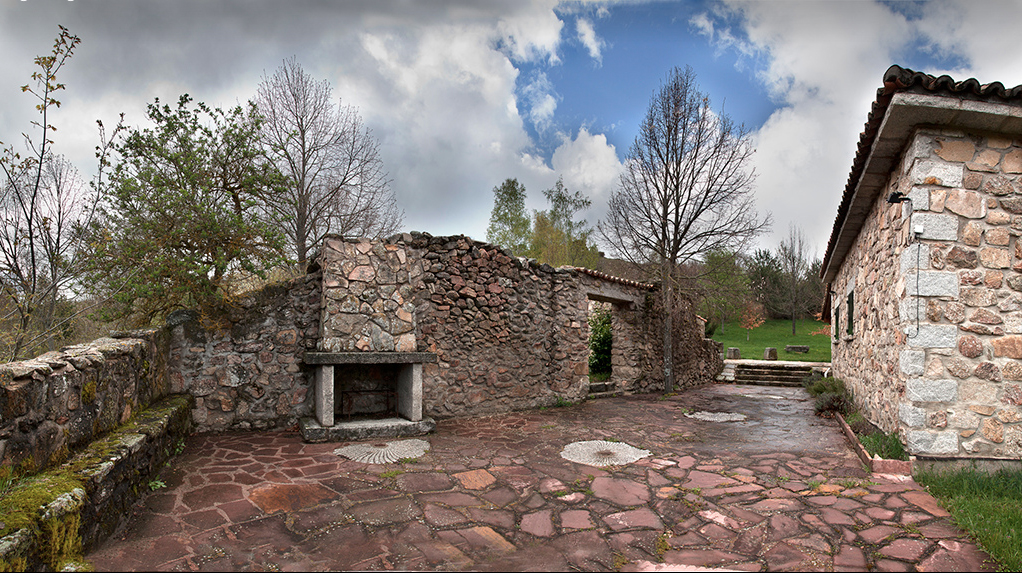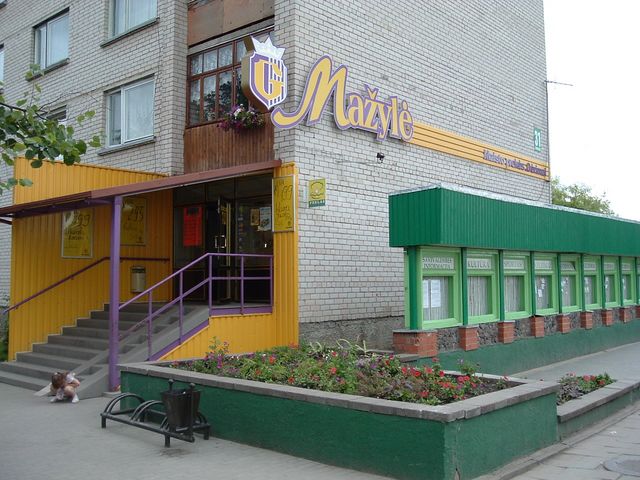|
Venta (other)
Venta may refer to: Architecture * Venta (establishment), a Spanish typical inn generally located in unpopulated and remote rural areas. Places * Venta (river), a river in Lithuania and Latvia * Venta (city), a city in Lithuania * Venta (village), a village in Lithuania * ''Venta'' (catamaran), a 1973 Latvian catamaran *''Venta'', Common Brittonic for "market" or "town" in Iron Age Britain, used particularly for: ** Venta Belgarum (Venta of the Belgae), the Roman town of Winchester in England ** Venta Icenorum (Venta of the Iceni), the Roman town of Caistor St Edmund in England ** Venta Silurum (Venta of the Silures), the Roman town of Caerwent in Wales People * Javi Venta (born 1975), Spanish footballer * Krishna Venta (1911–1958), American cult leader See also * La Venta (other) La Venta is an archaeological site of Mexico. La Venta may also refer to: * La Venta (Colombia), a fossil locality in Colombia * La Venta, Francisco Morazán, a municipality in Honduras * ... [...More Info...] [...Related Items...] OR: [Wikipedia] [Google] [Baidu] |
Venta (establishment)
A venta, ventorro or ventorrillo is an establishment or building of ancient tradition in Spain and some other Hispanic countries located near paths or unpopulated areas, and later near roads or service stations. They can be considered as an equivalent to inns, though their main characteristic feature is the fact that they are almost always isolated, contrary to ''mesones'' and ''posadas'' which are located near or inside towns and villages. Throughout their history, ventas have offered food and accommodation to travellers. In Spain, their antiquity is well referenced and documented by literature, like in ''The Book of Good Love'' (''ca.'' 1330) or ''Don Quixote'' (1615), or in paintings like ''La riña en la Venta Nueva'' of Francisco Goya. Use of the term has also been registered in some Hispanic-American countries, like the Venta de Aguilar, the first one established in the Mexico-Veracruz road, or the popular Venta de Perote, both in Mexico. Description Although the archite ... [...More Info...] [...Related Items...] OR: [Wikipedia] [Google] [Baidu] |
Venta (river)
The Venta (Latvian pronunciation , Lithuanian , , , Livonian ''Vǟnta joug'') is a river in north-western Lithuania and western Latvia. Its source is near Kuršėnai in the Lithuanian Šiauliai County. It flows into the Baltic Sea at Ventspils in Latvia. On the territory of Lithuania along the Venta are cities Užventis, Kuršėnai, Venta, Viekšniai and Mažeikiai. In Latvia, the cities of Kuldīga, Piltene and Ventspils are located on the Venta river. Venta has the widest waterfall in Europe — Venta Rapid. Basin system River has only one tributary longer than 100 km, the Abava. Other major tributaries include the Virvyčia (99.7 km) and the Varduva (96 km), which flows into the Venta at the Latvia–Lithuania border. Smaller tributaries include the Avižlys, which runs for 20 kilometers and flows into the Venta River and the 30 kilometre Uogys which joins the Venta less than 1 km upstream of the Avižlys at Akmenė district municipality, Šiaulia ... [...More Info...] [...Related Items...] OR: [Wikipedia] [Google] [Baidu] |
Venta (city)
Venta () is a small city in Lithuania in the Akmenė district municipality. According to a 2021 census, there are 2,250 people living in Venta (56.4% female, 43.6% male). It is situated along the Venta River, Kuršėnai-Mažeikiai highway, and a railroad connecting Mažeikiai with Šiauliai (the train station is called Akmenė). This makes Venta better situated than Naujoji Akmenė, the capital of the district. Venta is also from the small villages of Žerkščiai and . There is a small bridge connecting Venta to Žerkščiai. There are 2 Seniūnaitijas which make up Venta; "Draugystės" and "Ventos Miesto". Etymology The name of the city derrives from the Venta River, which flows near the southern and western parts of the settlement. Geography The city is located on the right bank of Venta (river), in a winding stretch of the river, at the mouth of Eglesys. The former Libau–Romny Railway runs along the northern edge of the city of Venta. The Venta (village) is also located ... [...More Info...] [...Related Items...] OR: [Wikipedia] [Google] [Baidu] |
Venta (village)
Venta is a village northwest of the city of Venta in the southwest of the Akmenė District Municipality, Lithuania. It is situated on the road 156 Naujoji Akmenė Naujoji Akmenė (; Samogitian: ''Naujuojė Akmenė'') is a new town that was established in 1952 and is one of the newest cities in Lithuania. Its name means ''New Akmenė''. It is an industrial base with concrete as its main product, with Publ ...– Venta. It is also the place where the companies UAB "Ventos Meistrai" and UAB "Viking Industrier" operate. Population Venta's population peaked in 1979 with 452 residents and was at its lowest in 2021 with 226. References Akmenė District Municipality Villages in Šiauliai County {{ŠiauliaiCounty-geo-stub ... [...More Info...] [...Related Items...] OR: [Wikipedia] [Google] [Baidu] |
Venta (catamaran)
Venta was a catamaran designed in Latvia in 1973. At the time it was considered "comfortable, secure, moderately priced and faster than the best single hull yachts", became popular and won all the local races. See also * List of multihulls Types * catamaran = two symmetric hulls * proa = two asymmetric hulls, reverse-shunting (interchangeable bow/ stern) * trimaran = three hulls * quadrimaran = four hulls * pentamaran = five hulls Pre-modern Austronesian * ʻalia * Amatasi ... References {{reflist Catamarans ... [...More Info...] [...Related Items...] OR: [Wikipedia] [Google] [Baidu] |
Venta Belgarum
Venta Belgarum, or Venta Bulgarum, was a town in the Roman province of Britannia Superior, the civitas capital of the local tribe, the Belgae, and which later became the city of Winchester. Etymology The name is Proto-Celtic in origin: ''Venta'' comes from ''*Uentā'', a Common Brittonic word meaning "market". Roman writers recorded the town as ''Venta Belgarum'' (The Venta of the Belgae) to distinguish it from the other tribal markets in Britain such as Venta Silurum and Venta Icenorum. Development The settlement was apparently established around AD 70, partially on the site of Oram's Arbour, which had been abandoned for some years. It became the tribal capital of the Belgae, who had probably held several Iron Age hill forts in the near vicinity of the site ( St Catherine's Hill, Oram's Arbour and Worthy Down) once the Romans had pacified the area, as was their policy for relocating many other British tribes. The River Itchen was diverted and a street grid laid out. Althoug ... [...More Info...] [...Related Items...] OR: [Wikipedia] [Google] [Baidu] |
Venta Icenorum
Venta Icenorum (, literally "marketplace of the Iceni") was the civitas or capital of the Iceni tribe, located at modern-day Caistor St Edmund in the English county of Norfolk. The Iceni inhabited the flatlands and marshes of that county and are famous for having revolted against Roman rule under their queen Boudica in the winter of AD 61. Roman town The town itself was probably laid out, and its first streets metalled, in approximately the first half of the second century. The town, which is mentioned in both the ''Ravenna Cosmography'' and the ''Antonine Itinerary'', was a settlement near the village of Caistor St. Edmund, some south of present-day Norwich, and a mile or two from the Bronze Age henge at Arminghall. The site lies on the River Tas. Archaeology In 1928, an aerial reconnaissance flight of a farm near Caistor St Edmund rediscovered the ruins of Venta Icenorum. A five-year archaeological dig soon followed, led by archaeologist Donald Atkinson. The sit ... [...More Info...] [...Related Items...] OR: [Wikipedia] [Google] [Baidu] |
Venta Silurum
Venta Silurum was a town in the Roman province of ''Britannia'' or Britain. Today it consists of remains in the village of Caerwent in Monmouthshire Monmouthshire ( cy, Sir Fynwy) is a county in the south-east of Wales. The name derives from the historic county of the same name; the modern county covers the eastern three-fifths of the historic county. The largest town is Abergavenny, with ..., south east Wales. Much of it has been Excavation (archaeology), archaeologically excavated and is on display to the public. History Foundation Venta was established by the Roman Empire, Romans in around AD 75 as an administrative centre for the defeated Silures tribe in Wales in the Roman Era, Roman Wales. Venta Silurum seems to mean "Market town of the Silures" (cf. Venta Belgarum and Venta Icenorum). This is confirmed by inscriptions on the "Civitas Silurum" stone, now on display in the parish church. The town, which was located on the Roman road between ''Isca Augusta'' (Caerleon ... [...More Info...] [...Related Items...] OR: [Wikipedia] [Google] [Baidu] |
Javi Venta
Javier 'Javi' Rodríguez Venta (born 13 December 1975) is a Spanish retired professional footballer who played as a right-back. He amassed La Liga totals of 270 matches and two goals over 11 seasons, mainly with Villarreal (eight years). He also appeared in the competition with Tenerife and Levante, and had a brief abroad spell in England with Brentford. Career Early years Venta was born in Pola de Siero, Asturias. After playing his early career with modest Spanish clubs he was bought in 1999 by Villarreal CF, but would spend the next three seasons with the farm team (CD Onda) and on loan stints. He made his La Liga debut in the latter predicament in the 2001–02 season, playing 29 league games for CD Tenerife who ranked second-bottom. Villarreal and Levante In 2002–03, Venta returned to Villarreal and went on to become a steady first-choice throughout the season. In the 2004–05 campaign he appeared in 32 matches as the Valencian side achieved a club-high third place; ... [...More Info...] [...Related Items...] OR: [Wikipedia] [Google] [Baidu] |
Krishna Venta
Krishna Venta (born Francis Herman Pencovic; March 29, 1911 – December 10, 1958) was an American cult leader. He was the leader of a Californian religious group in the 1940s and 1950s. Venta founded his WKFL (Wisdom, Knowledge, Faith, and Love) - Fountain of the World cult in Simi Valley, California. About Pencovic was born in San Francisco in 1911 to Albert Pencovic, a Jewish immigrant from Romania, and his wife Maude Busenbach, born in Utah. Pencovic graduated from high school in Elko, Nevada. He married twice and served in the United States Army during World War II. After World War II, Pencovic started his " religion". In April 1948, he stated: "I may as well say it, I am Christ." Krishna claimed to have been born on another planet Neophrates 240,000 years ago. This planet purportedly occupied the same orbit as Earth does currently. Pencovic also alleged it was humanity’s first home. As Pencovic's canon goes, Neophrates moved inexorably closer to the sun and became unin ... [...More Info...] [...Related Items...] OR: [Wikipedia] [Google] [Baidu] |






